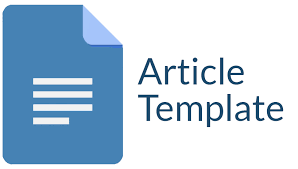PENINGKATAN KUALITAS PERENCANAAN ANGGARAN MELALUI SISTEM INFORMASI PEMERINTAHAN DAERAH (STUDI PADA EFEKTIVITAS PENGGUNAAN PLATFORM SIPD DI DINAS PENENAMAN MODAL DAN PELAYANAN TERPADU SATU PINTU KOTA YOGYAKARTA)
DOI:
https://doi.org/10.26740/publika.v12n2.p381-394Keywords:
Keywords: E-Government, Effectiveness, SIPD, Budgeting.Abstract
Problems in national planning and budgeting are still a major concern. The government adopts a management information system to improve the efficiency and effectiveness of local government implementation, namely the Local Government Information System (SIPD). SIPD is one of the innovations of the Ministry of Home Affairs which has various features to facilitate work in the field of regional financial management. However, in the implementation of the Regional Government Information System (SIPD) there are still a number of problems faced by the Regional Government of Yogyakarta City, especially in the Investment Office and One-Stop Integrated Services of Yogyakarta City, such as the lack of understanding of users or operators when using applications, internet networks and SIPD servers which are still often errors and lack of technical guidance related to the use of SIPD. This study aims to determine and describe the effectiveness of the Local Government Information System (SIPD) in budget planning at the Investment Office and One-Stop Integrated Services of Yogyakarta City. The type of research used is descriptive research with a qualitative approach. The focus of research using the theory of success of information systems (2016) by William H. Delone and Ephraim R. McLean includes system quality, information quality, service quality, use, user satisfaction and net benefits. The results of this study show that the use of the SIPD application in the Investment Office and One-Stop Integrated Services of Yogyakarta City can be said to be quite good and effective. However, there are still some shortcomings, namely the system is not fully reliable because it often experiences problems and errors during the budgeting process. In addition, server performance that is not optimal is also an obstacle that interferes with the smooth running of user activities and response time from the system that is still not satisfactory.
Downloads
 Abstract views: 289
,
Abstract views: 289
, PDF Downloads: 389
PDF Downloads: 389





